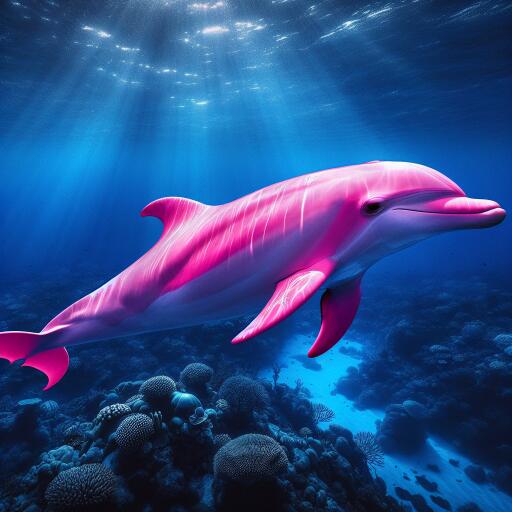Unveiling the Mystery Behind the Viral Pink Dolphin Pictures
In a world where the internet can sometimes blur the lines between fact and fiction, a recent discovery on social media has left many netizens both amazed and skeptical. Originating from North Carolina, pictures of what appears to be a pink dolphin have captivated audiences worldwide, sparking discussions and debates about its authenticity. These images, which quickly spread across social platforms, especially on X (formerly Twitter), showcase a strikingly rare creature washed ashore, far from its natural habitat. But is this phenomenon as real as it seems?
The Discovery That Captured Hearts
The narrative took off when a series of pictures were shared on X by a user named Facts Matter, who claimed to have come across a rare pink dolphin off the coast of North Carolina. According to the post, the dolphin was stranded on a beach, apparently displaced from its aquatic home. The internet couldn’t help but marvel at this discovery, propelling these images into viral status. However, upon closer inspection, doubts were raised about the pictures’ authenticity.
Many social media users, equipped with a critical eye, noticed peculiarities that suggested the dolphin might not be real after all. The most telling sign was a visible word ‘cola’ on the dolphin’s forehead, a detail that seemed more fitting for a plastic toy than a living creature. Additionally, the consistency in the dolphin’s posture across various photos led to further skepticism, with the consensus leaning towards the images being either fake or generated by artificial intelligence (AI).
Skepticism and Fascination Collide
Despite these doubts, the online community was divided. Some users were quick to dismiss the pictures as fabrications, pointing out their unrealistic aspects. “People keep sharing that fake AI pink dolphin on Facebook, we’re doomed,” commented one disheartened user. Meanwhile, others held onto a thread of hope or curiosity, with comments ranging from admiration of the dolphin’s beauty to speculative comparisons with known sightings of albino dolphins.
A particular user argued against the skepticism, stating, “It’s not AI. They show up every now and then. Last one was a few years ago, near Louisiana. Albino dolphins are just rare,” showcasing the diversity of opinions on this matter.
The Truth About Pink Dolphins
While the veracity of the North Carolina pink dolphin pictures remains contested, the existence of pink dolphins themselves is not a myth. These unique mammals, officially recognized by the World Wildlife Fund, are known as Amazon River dolphins or botos. True to their name, these creatures flaunt a distinct pink hue and inhabit freshwater ecosystems, primarily within the Amazon and Orinoco River basins. Spanning countries like Brazil, Bolivia, Colombia, and Peru, the pink river dolphin plays a crucial role in its natural habitat, showcasing the incredible biodiversity of these regions.
Concluding Thoughts
The tale of the North Carolina pink dolphin serves as a fascinating case study in the dynamics of social media and the spread of misinformation. While the images in question may not depict a real pink dolphin, they have certainly succeeded in sparking interest and awareness about these extraordinary creatures. As always, it’s essential to approach viral phenomena with a critical mind, separating fact from fiction while appreciating the wondrous diversity our planet has to offer.
In an era where digital manipulation can easily create optical illusions, let this instance remind us of the importance of verification and the value of genuine wonders in the natural world.










